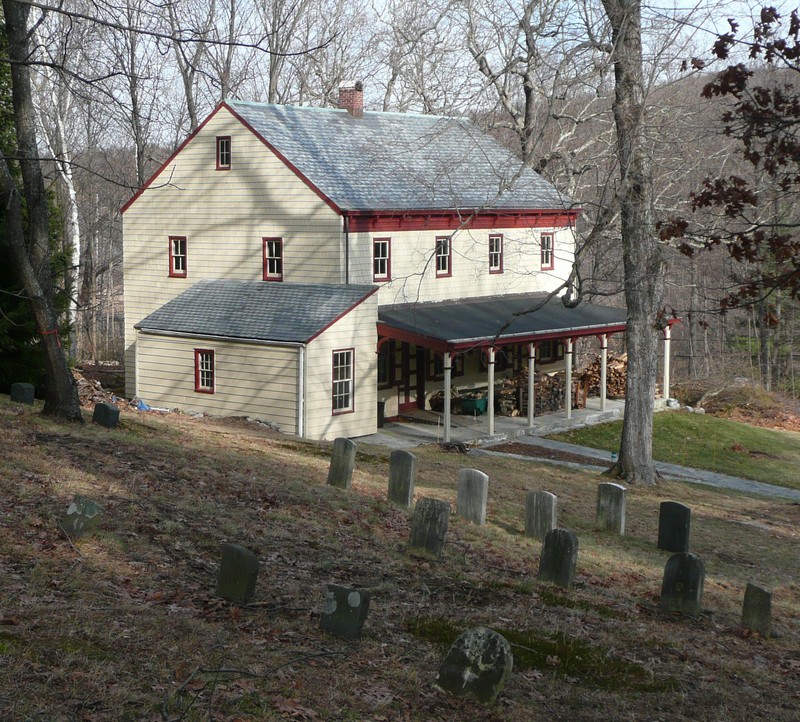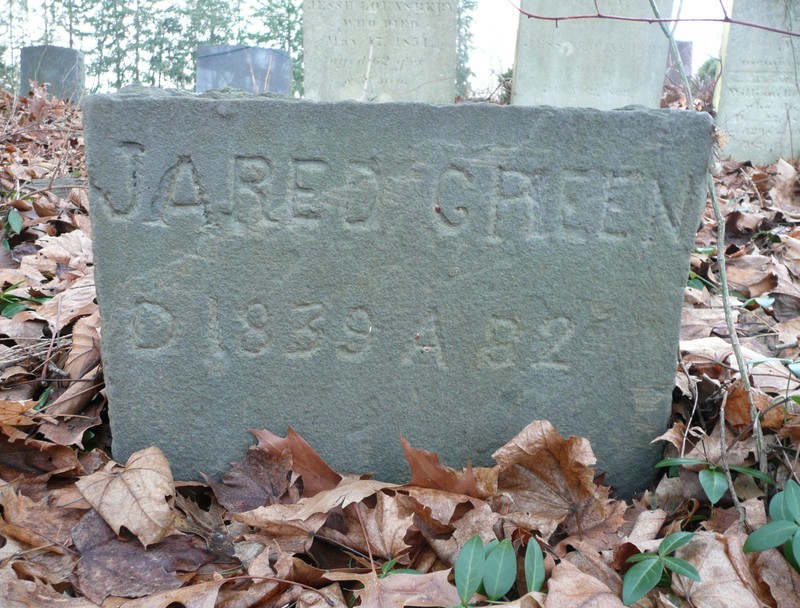Amawalk Friends Meeting House
Introduction
Text-to-speech Audio
Images
Amawalk Friends Meeting House.

The tombstone of Jared Green, who died in 1839 at the age of 82, at the Amawalk Friends Meeting House Cemetery.

Backstory and Context
Text-to-speech Audio
Also known as Quakers, members of the Society of Friends have been meeting in Amawalk since about 1760. Records indicate that a meeting on "Cortlands Manor" was active in 1767. Five years later this congregation requested and received permission to build a meeting house, which was completed in 1773. In 1779 this meeting house was destroyed by fire, and it was replaced by a new building that was finished by 1787. During the Separation 1827, when Quaker congregations split into Orthodox and Hicksite factions, the Amawalk Friends sides with the Hicksite faction. The Hicksite Friends "emphasized the role of the Inward Light in guiding individual faith and conscience."
The second meeting house used by the Amawalk Friends was destroyed by fire on December 14, 1830. A third meeting house was reported completed on August 12, 1831, at a cost of $1,272.94. This frame structure, which has changed little since its completion, still stands today, and reflects the simplicity of design favored by the Society of Friends. The building features two separate entrances, which were originally separate entrances for men and women. These doors are approached via a porch that was likely added in the middle of the 19th century. The cloakroom and privy at the west end of the building were also probably added in the mid-1800s. The interior of the meeting house features a large meeting space on the first floor and a second-floor gallery. The older of the two wood-burning stoves in the meeting space was purchased in 1888. Typical of a traditional Quaker meeting house, the meeting space has no sanctuary or altar.
Behind the meeting house is a burial ground that was first used by the Amawalk Friends in the 18th century. The majority of the tombstones in the burial ground are simple, and contain little information beyond the deceased's name and dates of birth and death. The larger Amawalk Hill Cemetery to the west and Carpenter Side Hill Cemetery to the north are not part of the Amawalk Friends Meeting House property, which comprises 2.9 acres. Perhaps the most well-known person interred in the Friends burial ground is war photographer Robert Capa, whose grave is located near the western boundary of the property.
The Amawalk Friends Meeting experienced a great amount of growth during the 1970s and 1980s, and as a result the congregation built a First Day School south of the meeting house. The school building was completed in 1987. The Amawalk Friends Meeting House was added to the National Register of Historic Places in 1989.
Cite This Entry
Brendan Murphy on behalf of Westchester County Historical Society. "Amawalk Friends Meeting House." Clio: Your Guide to History. July 29, 2020. Accessed March 20, 2025. https://theclio.com/entry/103608
Sources
Ferguson, Val. A Brief History of the Branches of Friends, Quaker Information Center. Accessed May 14th 2020. https://quakerinfo.org/quakerism/branches/history.
Williams, Gray. Picturing Our Past: National Register Sites in Westchester County. Elmsford, N.Y.. Westchester County Historical Society, 2003.

